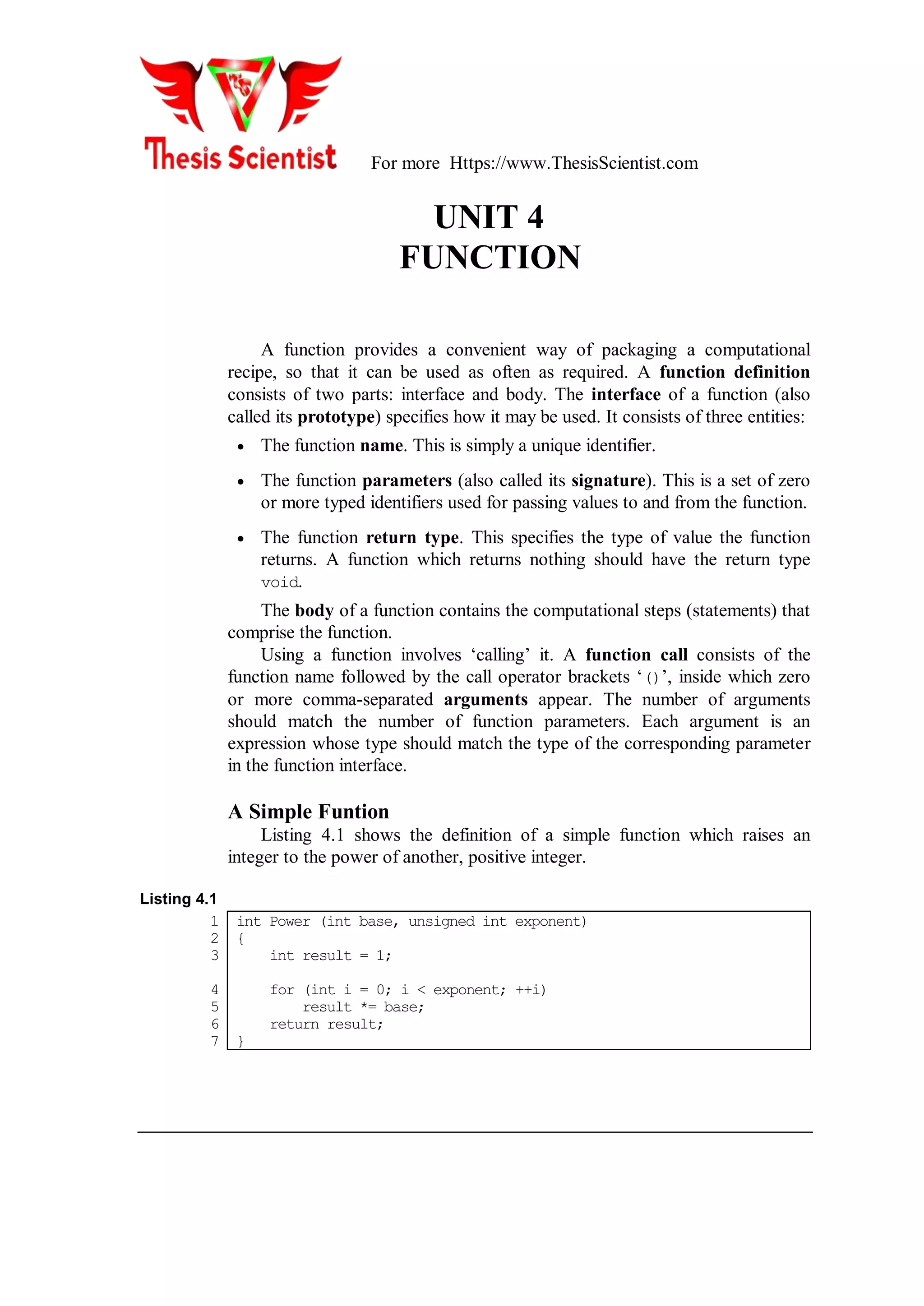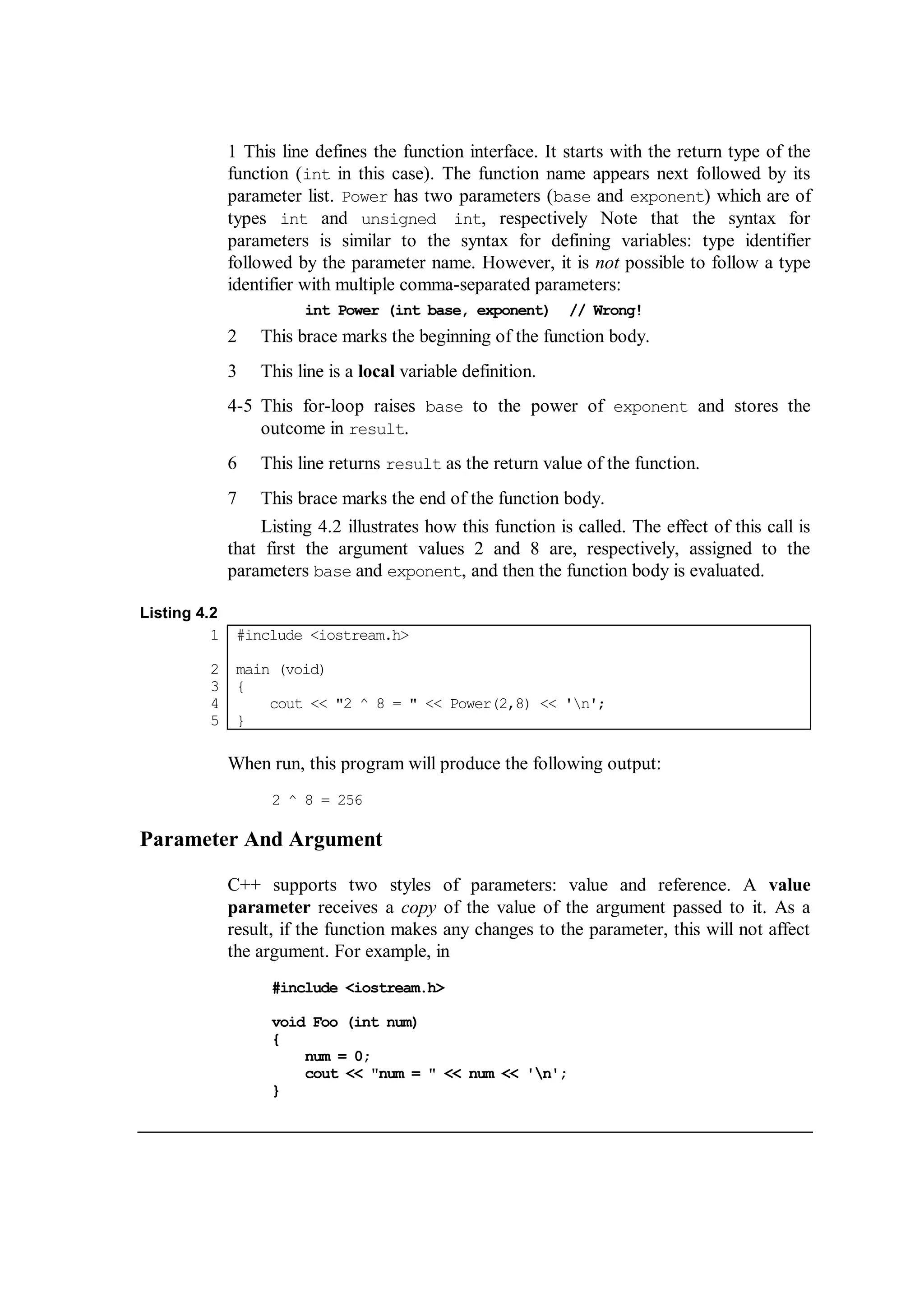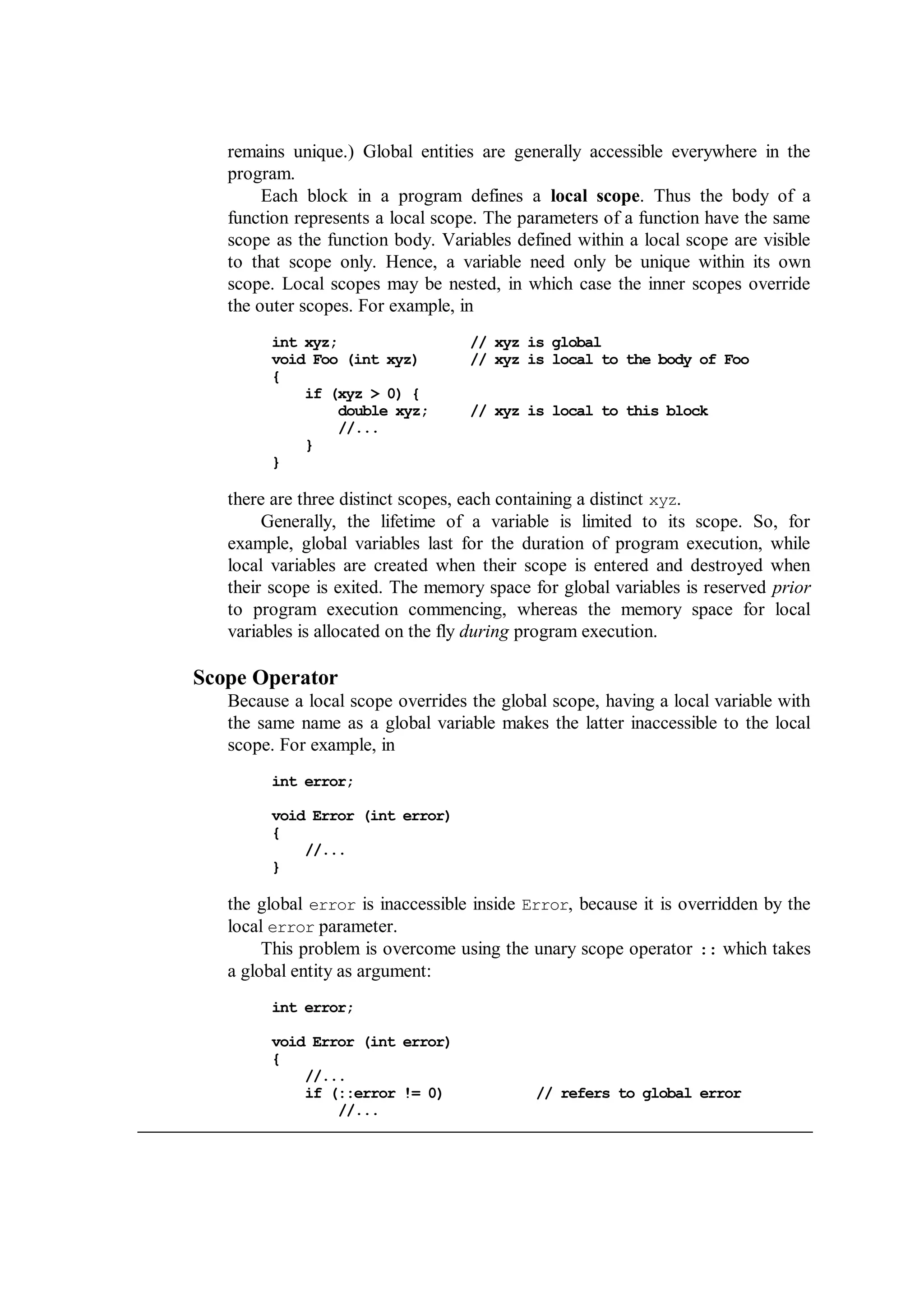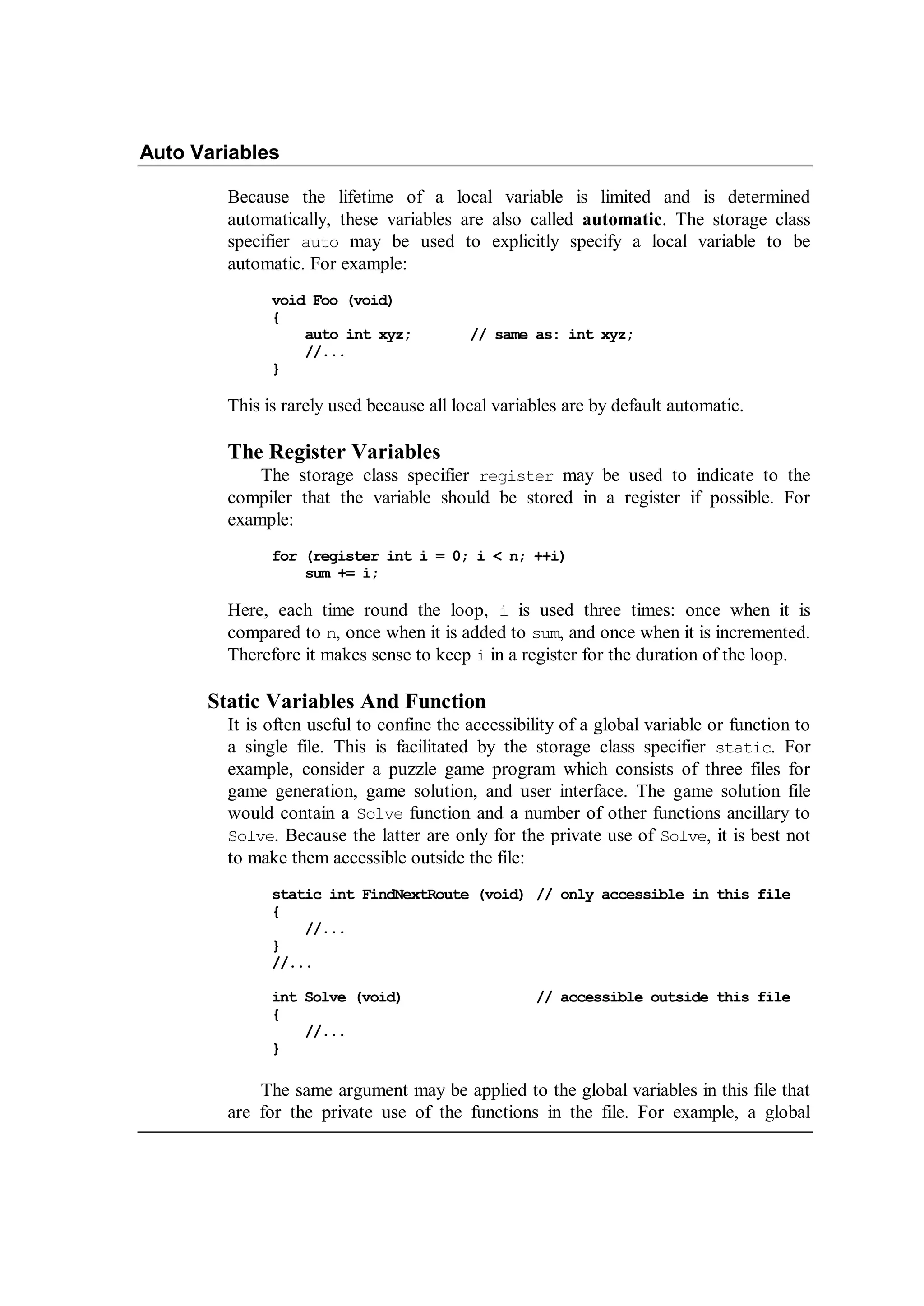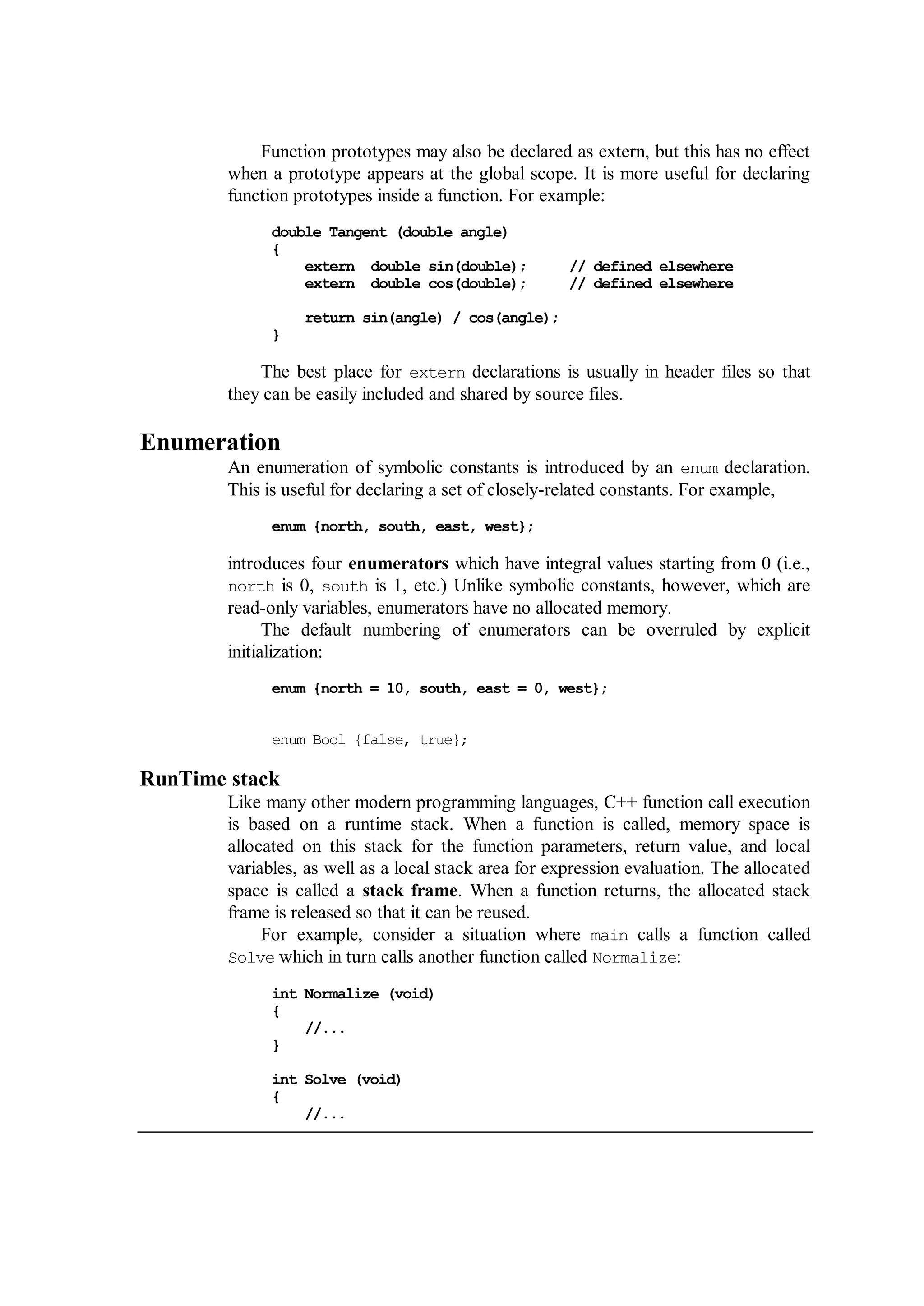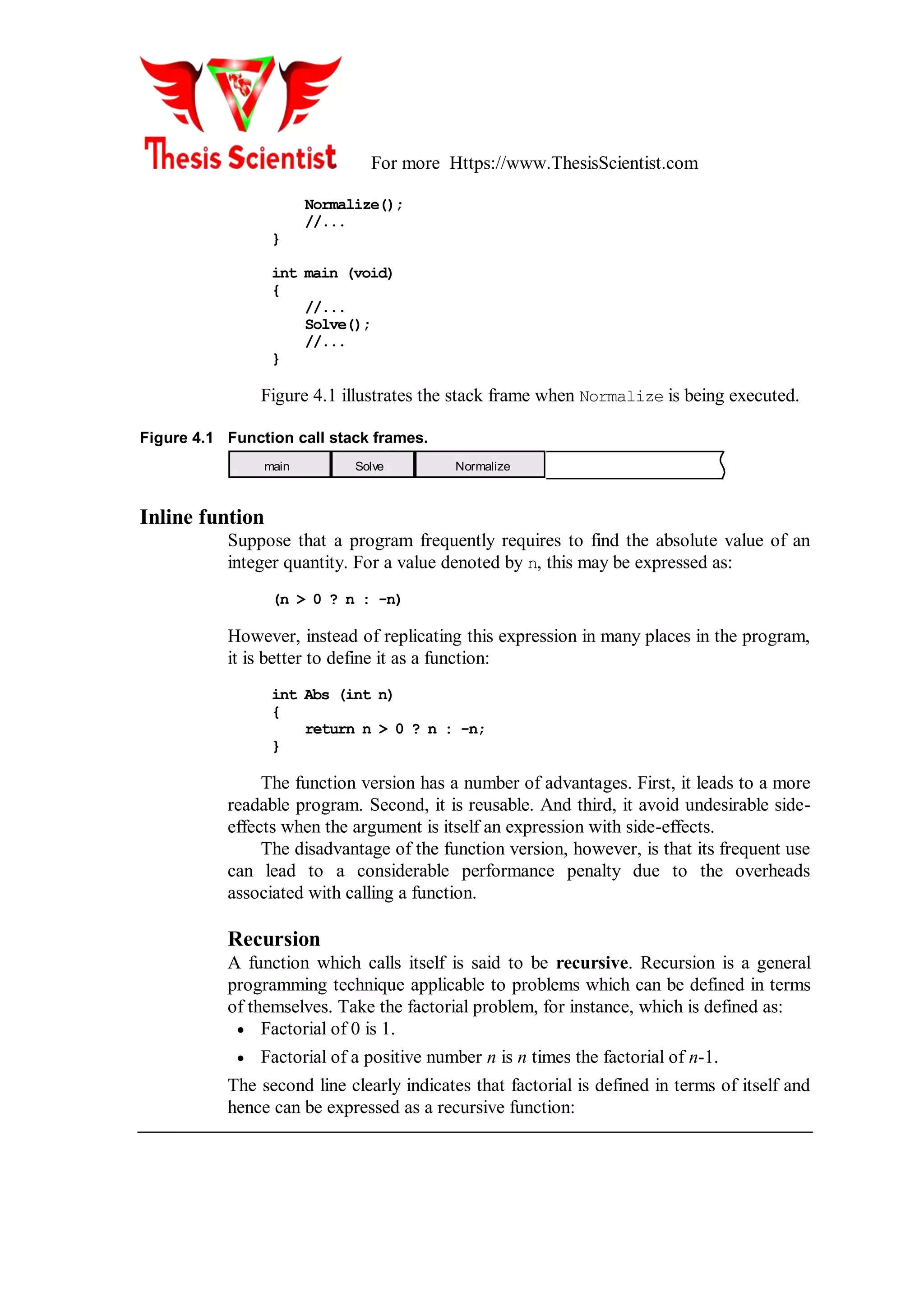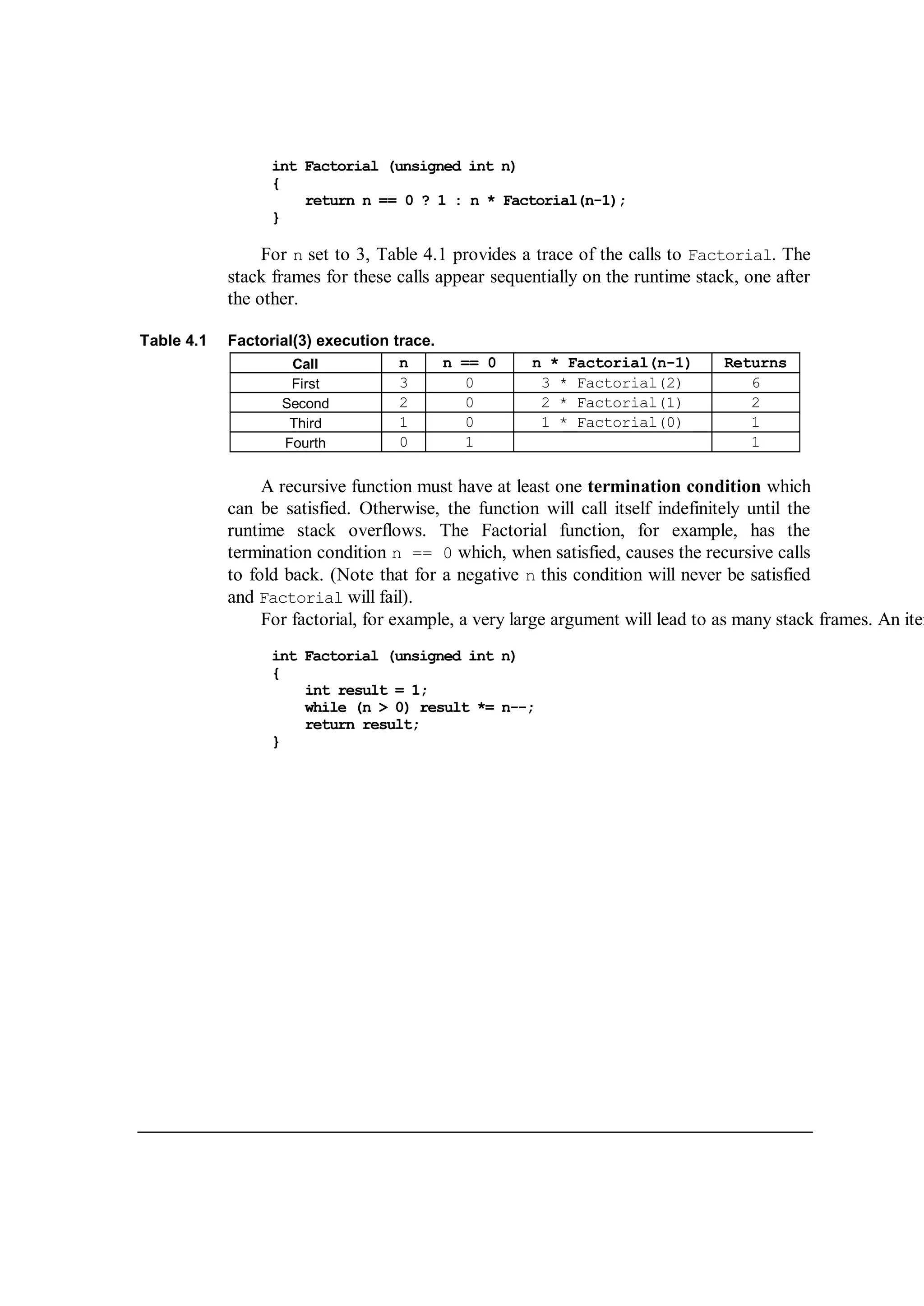The document discusses the concept of functions in C++, including their definitions, parameters, return types, and calling mechanisms. It explains the difference between value and reference parameters, global and local scopes, and various storage classes such as static and extern. Additionally, it covers topics like inline functions, recursion, and the runtime stack used during function execution.
